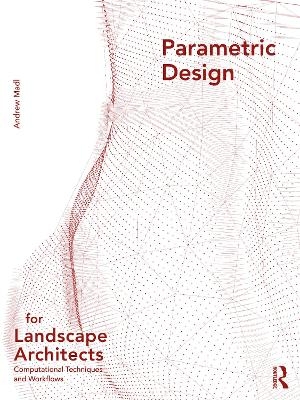
Parametric Design for Landscape Architects
Routledge (Verlag)
978-0-367-19529-8 (ISBN)
Parametric Design for Landscape Architects provides a sequence of tutorial-based workflows for the creation and utilization of algorithmic tools calibrated toward the field of landscape architecture. Contemporary practice and projective theory in landscape architecture require the processing and design of data associated with complex systems to adequately represent composite, emergent scenarios.
Aligning to both traditional and nascent processes of analysis and digital modeling, this book unpacks and decodes the characterization of algorithmic-based automation, leveraging software that is widely accessible in both academia and professional practice. Curated throughout are workflows that apply to a multiplex of computation programs that widely support the design, analysis, and production of landscapes, primarily concentrated on digital modeling tools Grasshopper and Rhinoceros. It is a much-needed, visually accessible resource to aid in more efficient understanding and creation of tools that automate and re-examine traditional calculations, analyses, drawing standards, form-finding strategies, fabrication preparations, and speculative assessments/simulation.
This primer provides professionals and students with multifaceted skill-sets that, when applied in practice, expand and expedite conventional and speculative design workflows applicable to spatial design, and more specifically landscape architecture. The book includes over 200 full-colour drawings, images, and tables to illustrate and support examples throughout.
Andrew Madl is an Adjunct Assistant Professor in the School of Landscape Architecture at the University of Tennessee, Knoxville. He positions landscape as a device for retooling the spatial conditions that accompany infrastructural, political, ecological, economical, and social systems at the territorial scale. His approach is grounded in exposing and leveraging implicit systemic intersections that can define spatial discourse. Andrew’s research focuses on computation and simulation as aligned to the speculative design and representation of landscapes of indeterminate futures. He holds an MLA post-professional degree from the Harvard Graduate School of Design and a BLA from the Pennsylvania State University.
1. Transformations, Translations, and Vectors: Leveraging Geometric Data 2. Landform Creation: Base Modeling, Site Design, Field Conditions 3. Landform Analytics and Calculations: Automation of Site Dynamics 4. Construction Documentation: Mechanization of Standards 5. Digital Fabrication: Facilitation and File Preparation 6. Urban Morphology and Analysis 7. Cartographic Representation and Data-Driven Visualization 8. Cellular Models, Agent-Based Behaviors, and Simulation: Speculation 9. Case Studies: Deconstructing the Use of Computational Tools in Professional Landscape Architecture Projects
| Erscheinungsdatum | 07.09.2021 |
|---|---|
| Zusatzinfo | 125 Line drawings, color; 80 Line drawings, black and white; 28 Halftones, color; 153 Illustrations, color; 80 Illustrations, black and white |
| Verlagsort | London |
| Sprache | englisch |
| Maße | 210 x 280 mm |
| Gewicht | 1011 g |
| Themenwelt | Sachbuch/Ratgeber ► Natur / Technik ► Garten |
| Informatik ► Weitere Themen ► CAD-Programme | |
| Technik ► Architektur | |
| ISBN-10 | 0-367-19529-1 / 0367195291 |
| ISBN-13 | 978-0-367-19529-8 / 9780367195298 |
| Zustand | Neuware |
| Haben Sie eine Frage zum Produkt? |
aus dem Bereich


